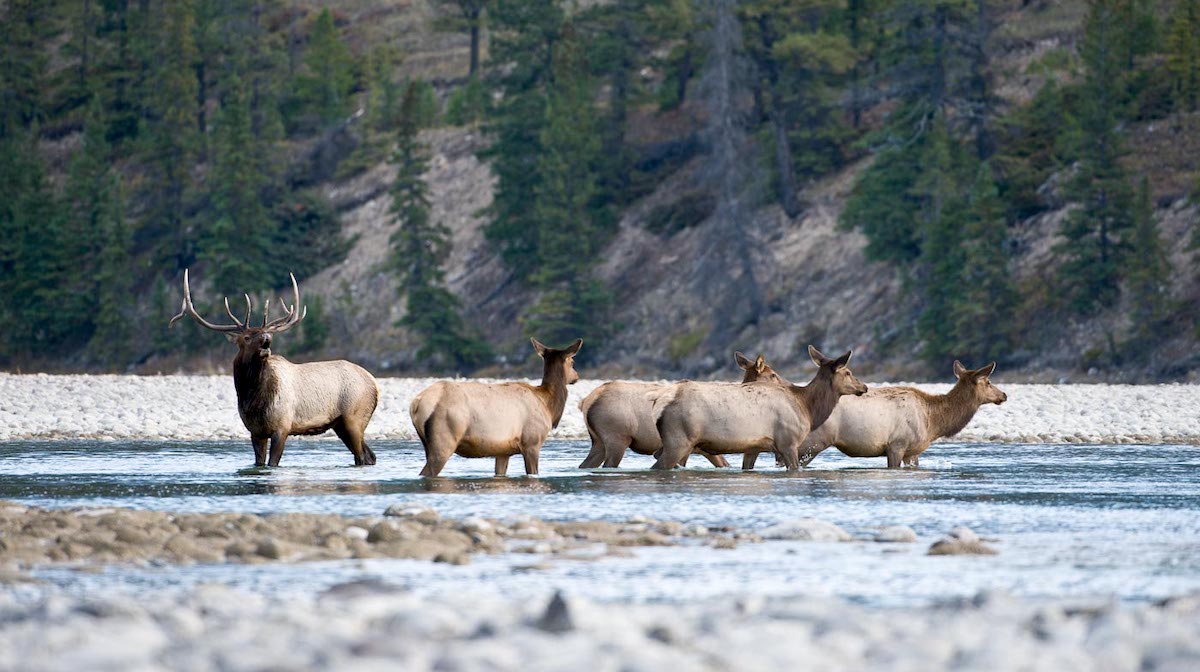
Maybe you’ve been there: You’re hunting and haven’t seen a hoofprint all day. Then there are tracks tearing up the snow—but instead of deer or elk, they are wolf, bear, or mountain lion.
As predator populations have expanded across the West in recent decades, so has the debate about what to do about it. On one end, some frustrated folks want to call in the gunships, post bounties, or throw open the rule book against carnivores.
While those approaches are perhaps appropriate in some settings, the fact is that heavy-handed predator control has real drawbacks. It’s politically controversial, it’s expensive, and it often just flat doesn’t work.
But biologists know there is a flip side to this coin. There are real steps hunters, land managers, and game departments can take to make our big game herds more resilient to predation.
Basically, these are steps to maximize nature’s own built-in system of checks and balances. After all, predator and prey have been living together for millennia. Here are a few of the best approaches for predator-proofing big game herds.
Swamping
Make sure there are enough bulls and bucks left after hunting season to efficiently breed the cows and does. Elk and deer benefit when the rut is short and efficient, because that means the young will be born within a short period of time come June. Calves and fawns are most vulnerable during their first few weeks of life. When all the young are born at once, they basically outnumber predators’ ability to find them. This natural phenomenon is called “swamping.”
Oregon researchers found that when there are inadequate numbers of bull elk in a population, the rut stretches an extra month as unbred cows continue trying to breed. That means calves are vulnerable longer. As a bonus, calves born early have more time to grow and put on weight before the rigors of winter hit, so benefits go beyond those first few weeks.
Maturity
Make sure there are enough older age bulls/bucks in the herd. Heavily hunted elk and deer populations tend to see fewer males surviving to maturity and that can be problematic. Again, Oregon researchers found that when spikes and raghorns do most of the breeding, elk calves tend to be smaller and less robust—hence more vulnerable to predators, disease, and bad weather.
Biologists recommend elk herds maintain a proportion of bulls over 3 ½ years old. This makes sense when you think about the care and expense that ranchers take to find the right breeding bull cattle. Cow elk “selectively breed” with the best available male, not dissimilar to horse and cattle breeders paying top dollar for the best DNA.
Food
While hunters often focus on trophy males, fat and happy female elk and deer are most important when it comes to the long-term health of the herd. Well-fed, healthy cows and does tend to have more young and bigger young—both very important factors for withstanding predation pressure. In some places, old grass, weeds, and decadent trees are squeezing out forbs, grasses, and shrubbery that elk and deer eat.
Careful thinning and prescribed fires can mean better groceries for cows and does, and more and stronger young to survive predators. Here’s a bonus: A buck mule deer born of a well-fed doe will grow bigger antlers over the course of its entire life.
Migration
Particularly in the West, protecting and enhancing migration routes allows animals to maximize the value of existing habitat. In the Midwest, a whitetail deer may live its entire live in one square mile. But in Wyoming or Colorado, a mule deer may roam 100 or 200 miles every year between winter and summer ranges. Those animals move to find the most nutritious plants in the summer and the safest place to spend the winter. Human development can choke off those migration routes, effectively blocking deer, elk, and pronghorn from available habitat.
Roads
Americans waste an enormous amount of wildlife in collisions with automobiles, not to mention the resulting human suffering and property damage. I know of one bighorn sheep herd that has lost more rams to car crashes than hunters have received tags to hunt them. Improved engineering technologies are making highways easier for wildlife to cross and safer to drive where they are in use. There is no upside to roadkill. Every deer hit by a car could have fed a hunter—or a wolf.
Shelter
Providing adequate thermal cover from winter storms or hot spells can help limit biological stress on deer and elk during the most stressful seasons. Just like you aren’t happy under a leaky roof, game cannot thrive without proper shelter. That means leaving trees for shade for the summer and to block snow and wind in the winter. The result is better survival during those critical late winter months. Security habitat can also help ungulates hide from predators. But it’s a double-edged sword, since denser cover may provide better conditions for stalkers like mountain lions.
Recreation
Like it or not, animals like elk are sensitive to human disturbance. Calves and pregnant females in late winter are particularly sensitive. Hikers, shed hunters, skiers, mountain bikers, dogs, dirt bikers, ATV riders, snowmobilers, and other trail enthusiasts can bump elk and deer on their winter ranges. Some places in Colorado, for example, are seeing elk herds decline sharply, in part due to high year-round recreational pressure and habitat loss associated with mountain resort development.
None of these methods are silver bullets against predation, weather, or disease. Elk and deer population rise and fall like the stock market. And all of these steps carry social or economic costs and tradeoffs. But by focusing on herd structure and habitat, our big game and hunting heritage can better weather the vagaries of the future. Including predators.
Feature image by Tony Bynum.





